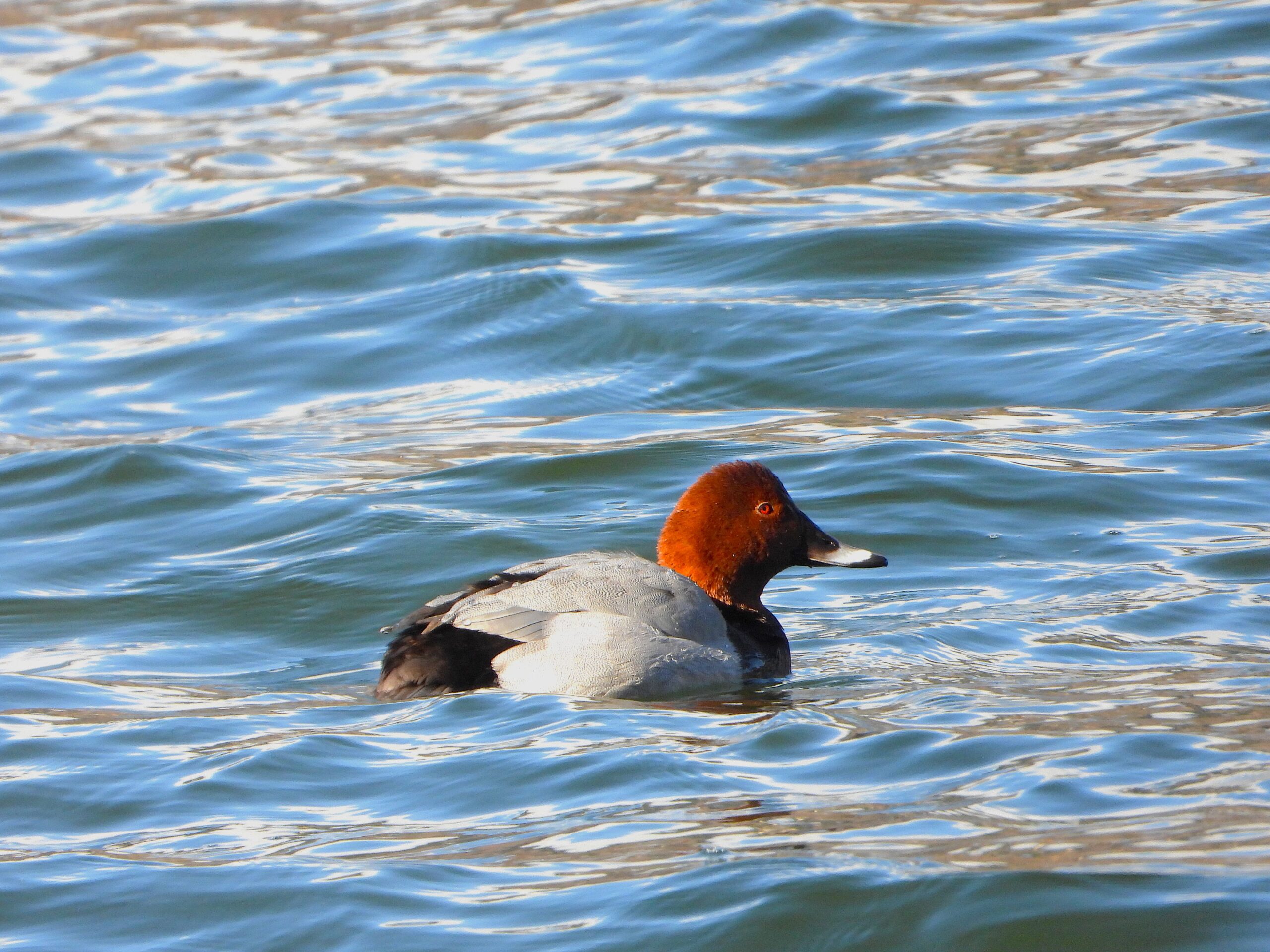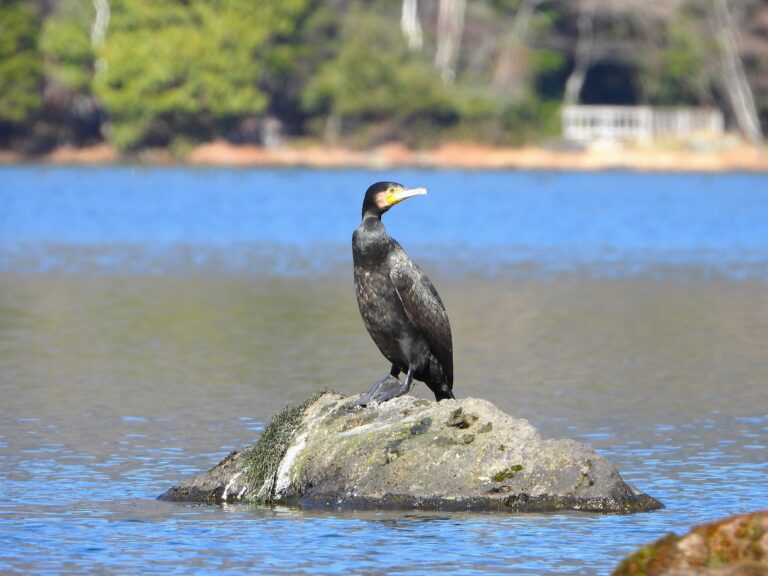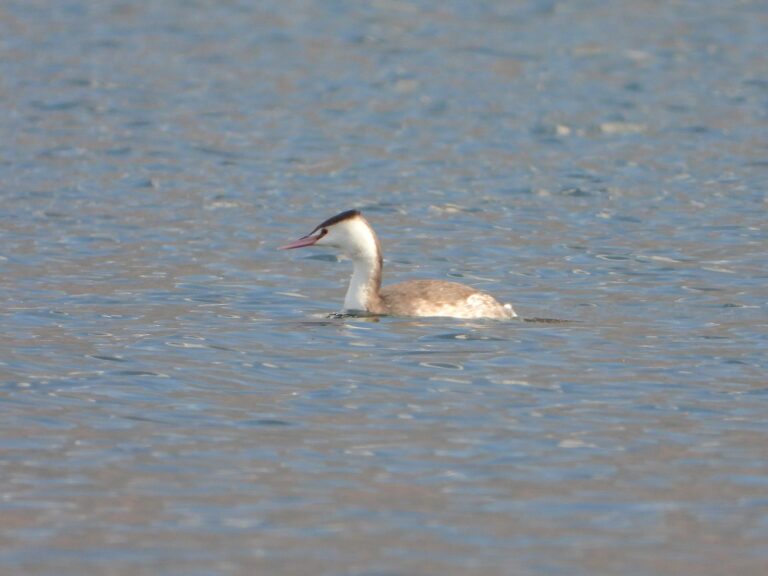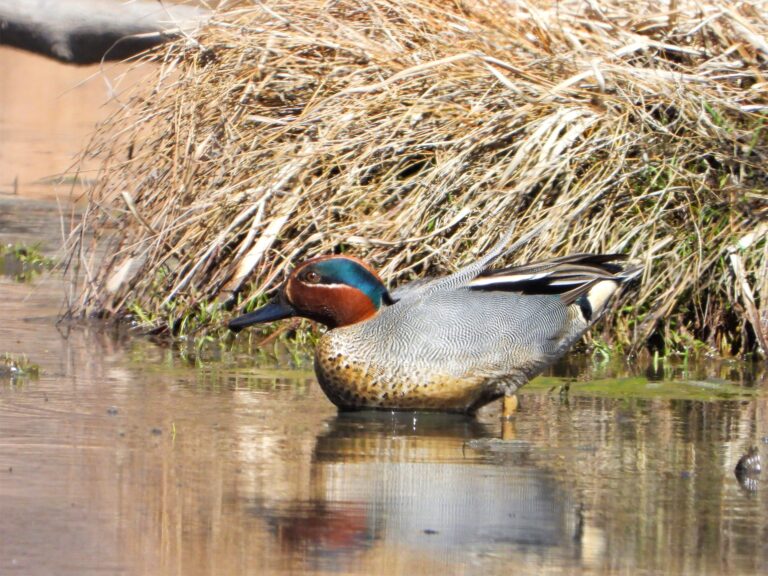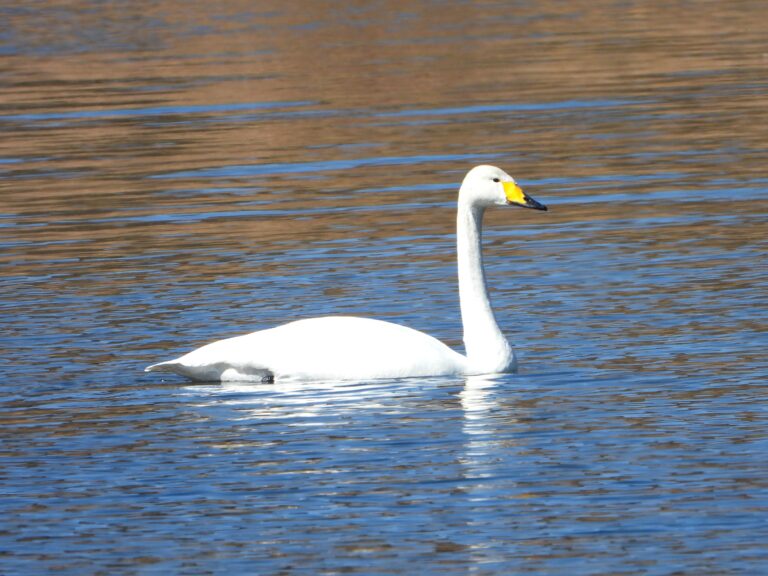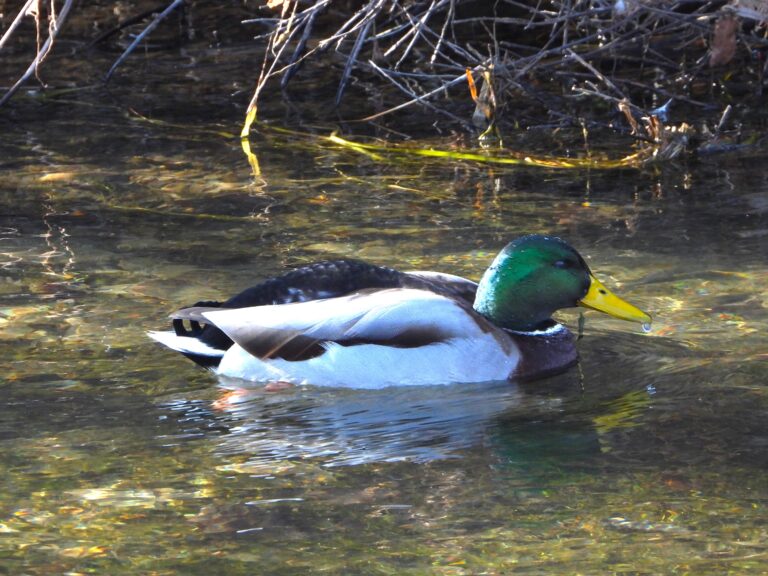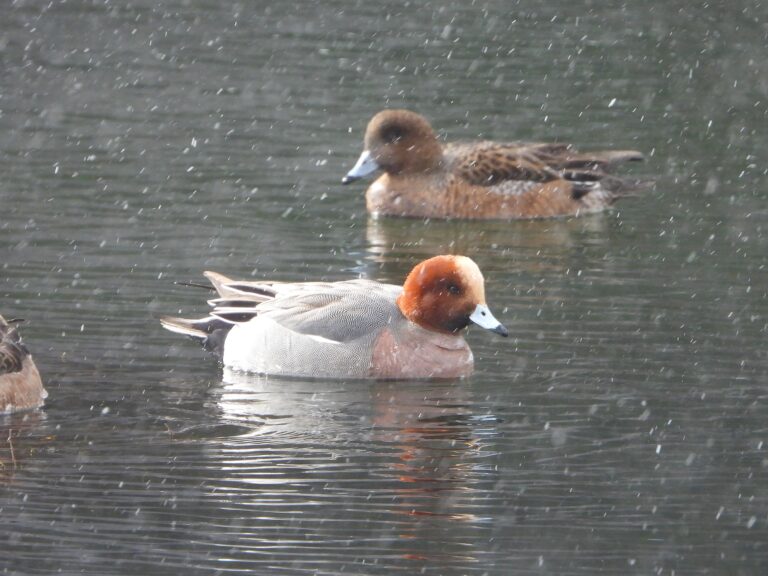Common Pochard (Aythya ferina) – Wildlife of Japan
Introduction
A widespread Palearctic diving duck, the Common Pochard is a familiar sight across Japan in winter. Males are easily recognized by their chestnut head, red eyes, and pale grey body, while females show a soft brown tone. On calm winter lakes, their rhythmic diving brings a quiet elegance to the landscape.
Taxonomy & Names
- Family: Anatidae
- Genus/Species: Aythya ferina
- English name: Common Pochard
Appearance
A medium-sized diving duck, around 48–50 cm long.
Males have a chestnut head, bright red iris, black breast, and light grey back. The bill is dark with a bluish-grey band. Females are overall brown, with a paler face and faint eye-line. Both sexes have slightly rounded heads and sit low in the water—helpful traits for identification.
Habitat & Distribution
It breeds across Eurasia’s temperate wetlands and winters further south. In Japan, it is a widespread winter visitor from Hokkaidō to Kyūshū, especially common on large lakes and calm bays. Rare local breeding has been recorded in eastern Hokkaidō. It prefers freshwater lakes, reservoirs, and slow rivers, occasionally coastal lagoons.
Where to See in Japan
- Lake Utonai (Hokkaidō) – A Ramsar site where large wintering flocks gather.
- Izunuma–Uchinuma (Miyagi) – One of Japan’s major duck habitats with thousands of pochards.
- Lake Biwa (Shiga) – Japan’s largest lake; an Important Bird Area with regular wintering groups.
- Shinobazu Pond (Tokyo) – A famous urban site where visitors can easily observe them from walkways.
(Best time: December–February. Look for mixed rafts with Tufted Ducks and Scaup.)
Behavior
Social and highly gregarious outside the breeding season, forming dense rafts of hundreds or thousands. They are true divers, feeding by submerging completely rather than dabbling. Birds often rest and feed together in rhythm, diving for 10–15 seconds at a time.
Diet
Feeds mainly on aquatic plants, seeds, and tubers, supplemented with mollusks, insects, and crustaceans. It dives to reach submerged vegetation and uses its bill to sift through mud and sediment.
Reproduction
Breeds in reed beds or vegetated lake margins across Eurasia. The female builds a nest from plant material and down, laying 6–10 eggs. Incubation lasts about 24–28 days. Brood parasitism (laying in other nests) is known. In Japan, confirmed breeding is very rare and limited to Hokkaidō.
Conservation
Listed as Vulnerable (VU) on the IUCN Red List due to population declines across Europe and Asia. Threats include habitat loss, hunting, and lead poisoning. Conservation focuses on wetland protection and migration monitoring.
Author’s Impression
One winter afternoon at a quiet lakeshore, I watched a flock of over a hundred pochards resting on the water. When the wind shifted, the sunlight caught their red eyes—a brief flash of color against the grey lake. It’s a simple but unforgettable scene that defines the calm beauty of Japan’s winter wetlands.

